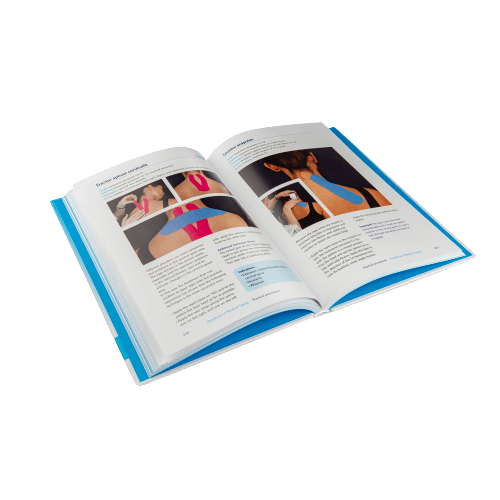What is a heel spur?
In general, 10% of the population will have to deal with heel spurs. The Kinesiology Taping Concept has a successful application that can help with heel pain complaints, such as heel spurs, heel splints and plantar fasciitis. CureTape® kinesiology tape can reduce pain in these conditions and stimulate a faster recovery.
A heel spur is a calcification of the tendon plate on the heel bone, which sometimes causes inflammation of the band of tissue that extends from the heel to the toes. This is called plantar fasciitis (plantar fascia inflammation). An X-ray image will show calcification, with the formation of a hook like heel spur at the location of the attachment of the tendon that runs to the forefoot.
Heel spur and plantar fasciitis symptoms
Both types of heel pain will have similar symptoms. The symptoms are usually worse when getting up in the morning and both pain and stiffness are likely to be felt. Usually the symptoms disappear on their own, but if the pain gets worse over time, treatment with CureTape is recommended to reduce the pain. Heel spur symptoms are:
- Heel pain and stiff-feeling foot in the morning
- Heel pain when standing or walking for a long time
- Severe sharp pain on the side of the heel
- Pain can refer to the upper arm, shoulder, forearm, wrist and hand.
- Slight swelling under the heel.
Get started with these items to tape heel spur
-
CureTape® Classic Kinesiology Tape
Bestseller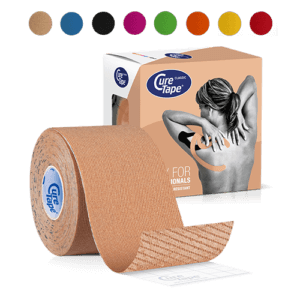 $19.95
In stockSelect options This product has multiple variants. The options may be chosen on the product page
$19.95
In stockSelect options This product has multiple variants. The options may be chosen on the product page -
CureTape® Sports Extra Sticky Kinesiology Tape
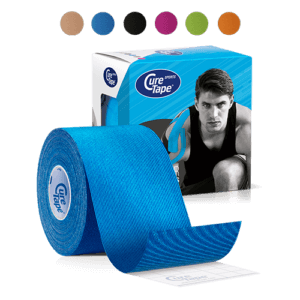 $21.95
In stockSelect options This product has multiple variants. The options may be chosen on the product page
$21.95
In stockSelect options This product has multiple variants. The options may be chosen on the product page -
CureTape® Art Printed Kinesiology Tape
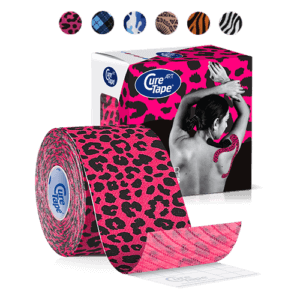 $21.95
In stockSelect options This product has multiple variants. The options may be chosen on the product page
$21.95
In stockSelect options This product has multiple variants. The options may be chosen on the product page -
Standard scissors
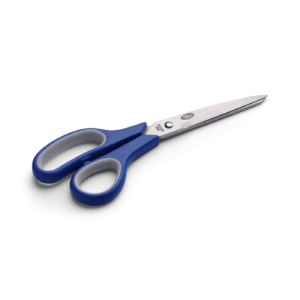 $14.95
In stockAdd to cart
$14.95
In stockAdd to cart

Christina’s advice when taping your foot
When taping your foot, it’s crucial to choose a tape that provides strong adhesion and support. That’s why I recommend CureTape kinesiology tape. For regular use, CureTape Classic or Art is ideal. However, since feet can sweat and there’s lots of friction, I recommend to opt for the extra sticky CureTape Sports variant!
How to tape heel spur video
Heel spur and plantar fasciitis inflammation consist of very similar symptoms, therefore their strapping treatments are also very similar. Various professional practitioners such as physiotherapists, podiatrists and osteopaths offer treatments for heel spurs. These treatments generally contain stretching exercises, massages or insoles. Kinesiology taping offers a valuable addition to this toolset.
How to tape heel spur
There are different ways to tape for a heel spur and plantar fasciitis. The following example is a successful application to treat heel pain and stimulate a faster recovery.
Step 1:

Step 2:
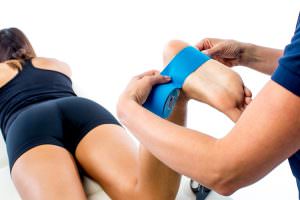
Step 3:

Instructions for professionals
- Position the client lying down in the prone position with the foot raised in dorsiflexion.
- Cut two CureTape strips of approximately 15 cm each and an additional slightly smaller strip.
- Tear the paper backing in the center of each tape strip.
- Stick the first tape strip with full stretch, starting just before the pain point under the heel and wrapping it around the heel.
- Apply the second tape strip in the same way, with a 50% overlap to the previous tape.
- Use the third tape strip to cover over the anchors for better fixation.
Instructions for self taping (non-professionals)
- Lie down on your stomach with your foot raised and toes pointing up (dorsiflexion).
- Cut two strips of tape about 15 cm long and one slightly smaller strip.
- Tear the paper backing in the middle of each tape strip.
- Stick the first strip with full stretch, starting just before the painful spot under your heel and wrapping it around the heel.
- Apply the second strip the same way, overlapping the first strip by 50%.
- Use the third strip to cover over the ends of the first two strips for better hold.
Learn how to tape
- The Ultimate Taping Guide: Focuses on self-taping for the 30 most common injuries where taping provides support.
- Kinesiology Taping Method Manual: Designed for (para medical) professionals, covering basic taping techniques and various pathologies.
- Decompressive Taping Techniques Manual: Specifically focuses on lymphatic taping methods for decompression.
What are you waiting for? Order a copy today!
THYSOL is the manufacturer of the kinesiology tape brand CureTape. As CureTape, we have been training and supplying professionals for 25 years. And consumers now know how to find us too! By manufacturing all our tapes in our own factory, we can guarantee the best quality!
Please note that the indicated tape applications and information on our website about the possibilities with kinesiology tape have not yet been scientifically proven. The statements and examples mentioned are based on long-term experiences of patients and trained therapists.
Contraindications not to tape: pregnancy, open wounds, broken bones, unexplained complaints, allergies and skin diseases, use of medication such as blood thinners, thrombosis and fever. Always apply tape in consultation with a specialist.

